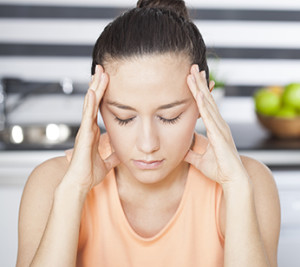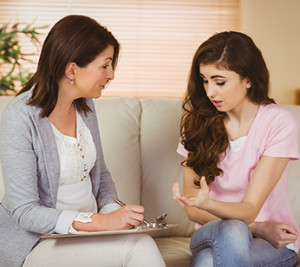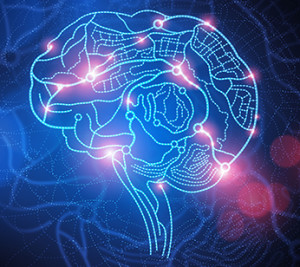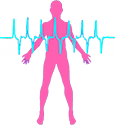I am a physical therapist with 26 years of experience who works with adults with chronic pain and was shocked and
dismayed when my active 11 year old daughter, who had multiple sprains and strains in the past, showed signs of
complex regional pain syndrome (CRPS) also called RSD in her left foot after a minor injury.
CRPS/RSD is a neuro inflammatory condition and it affects the autonomic nervous system – think flight or fight and all of
the things that occur in the body we do not consciously control. The brain and nerves get their signals crossed and send
constant pain signals to the brain in a non-stop and escalating loop (with the pain comes a fear of movement which
causes anxiety, which amps up the flight or fight system even more) and it results in various physical changes increased
temperature, swelling, discoloration, and decreased strength. Unfortunately, scientists do not know why some people
get CRPS and others do not although recent research is showing a link between autoimmunity. 1, 2. My 17 year old son
and I, as well as a plethora of cousins, have autoimmune diseases. Other studies have demonstrated differences in the
somatosensory areas of the brain (Rachael has some minor sensory integration issues), or differences in the cells of the
central nervous system, or a genetic component.3, 4
Essentially we may never know the cause, but we found what helped my daughter to break the cycle.
After my initial mom panic mode on seeing Rachael’s foot and leg turning purple and realizing that it was CRPS, I went to
work. Her initial doctor wanted her to have nerve blocks; I had done enough research to know we were not going to
start that way. Her second doctor was wonderful but thought the biofeedback and therapy could come later if the P.T.
did not work. Having been part of a comprehensive pain management program with Baylor, I believe biofeedback and
cognitive therapy is a significant part of the rehabilitation process with chronic pain, and I found Rusty and the Center
for Biofeedback and Behavior Therapy.
By this time Rachael had been on crutches or in a wheelchair for almost two months and was unable to tolerate the
lightest touch to her foot. The left lower leg was swollen and the skin on her foot was peeling; she had lost all active
movement of her foot and was losing muscle mass. Rachael was also unable to sleep, had difficulty concentrating at
school due to the 24 hour a day, unrelenting burning pain. Worst of all my happy, joyful girl was so, so sad. She kept a
smile on her face all day long; she said it did not take away the pain, but it made her feel better.
I called Rusty, explained our situation and he told us to come in for an evaluation. He taught her some basic biofeedback
techniques (which she practiced and showed all of her friends), showed her his awesome gym and we started treatment
the next week. Rachael was so excited to be doing something physical after being sidelined that she was able to work
through her pain and essentially reset the system so by the end of her very first session, she was able to take some steps
for the first time in almost two months. I will always remember her looking at me with big tears in her eyes “mom, I am
so happy”. I believe that was the first time she had hope that she would be able to walk again. She put her crutches
down the next day and took her first steps and was able to weight bear and walk on a treadmill at physical therapy.
Rachael has been in remission since December. She has hypermobile joints and has had some injuries since that time
and will likely have more (she is a VERY active child!) but now she automatically uses many of the techniques that Rusty
taught her to keep her from a flare and a relapse, which is always a concern. She also uses the techniques for any
stressful situation, so she has learned lifetime skills that she can use to overcome any obstacle she may encounter along
the way.
- Tammy Schoep
1. Dirckx M, Schreurs MWJ, de Mos M, Stronks DL, Huygen FJPM. The Prevalence of Autoantibodies in Complex Regional Pain Syndrome Type
I.Mediators of Inflammation. 2015;2015:718201. doi:10.1155/2015/718201.
2. Goebel ABlaes F. Complex regional pain syndrome, prototype of a novel kind of autoimmune disease. Autoimmunity Reviews. 2013;12(6):682-686.
doi:10.1016/j.autrev.2012.10.015.
3. Borchers AGershwin M. Complex regional pain syndrome: A comprehensive and critical review.Autoimmunity Reviews. 2014;13(3):242-265.
doi:10.1016/j.autrev.2013.10.006.
4. Barad M, Ueno T, Younger J, Chatterjee N, Mackey S. Complex Regional Pain Syndrome Is Associated With Structural Abnormalities in Pain-Related
Regions of the Human Brain. The Journal of Pain. 2014;15(2):197-203. doi:10.1016/j.jpain.2013.10.011.
5. Maihöfner C, Seifert F, Markovic K. Complex regional pain syndromes: new pathophysiological concepts and therapies. European Journal of Neurology.
2010;17(5):649-660. doi:10.1111/j.1468-1331.2010.02947.x.
Tammy




